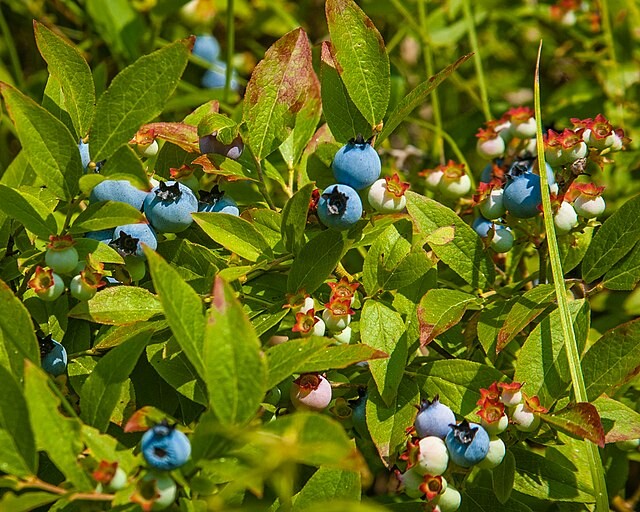Written by Don Richardson

 Little Blueberry (Vaccinium Darrowii)
Little Blueberry (Vaccinium Darrowii)Plant Type | Perennial Shrub |
Size | 2’ tall, 2’ wide |
Sun Exposure | full sun, partial shade |
Soil Type | well drained sandy, acidic |
Soil pH | 4 – 5.5 |
Bloom Time | Spring to late spring |
Hardiness Zones | 8-10 (USDA) |
Native | Is a Florida Native |
Pollination | Self Pollinates |
Edible Plant | Yes |
Medicinal Plant | Yes |
Any reference to medicinal or culinary use of plants or plant parts should in no way be considered an endorsement by The Ocala Food Forest or its staff. Research is crucial in safe and proper consumption or experimentational use of any plant.
Vaccinium darrowii, commonly known as the little blueberry plant, is a member of the Ericaceae family. It is native to North America and grows in wet, acidic soils in areas with warm summers and cool winters. This low-growing evergreen shrub is small but mighty, with delicate white flowers and sweet and tart blueberries that are packed with nutrition. Let’s explore why this small but mighty plant should be part of your garden.
Health Benefits of the Little Blueberry Plant
The Vaccinium darrowii produces delicious blueberries that are low in calories yet high in fiber, vitamins, minerals, and antioxidants. These antioxidant-rich berries can help reduce inflammation throughout the body. They also contain compounds such as resveratrol which have powerful anti-aging properties. And because they are naturally sweet, including them in your diet can help you cut back on added sugars. They have long been a staple food among Native American tribes who also use them for medicinal purposes including treating digestive issues and skin inflammation. The blueberries can be eaten fresh or dried and used to make jams, jellies, syrups, pies, muffins, and other baked goods. Additionally, parts of the plant can be brewed into teas which are said to have antioxidant properties.
Growing the Little Blueberry Plant
In addition to its edible uses, the Vaccinium Darrowii has also become popular in landscaping due to its dense foliage, attractive flowers, low maintenance requirements, and ability to attract wildlife such as butterflies and birds. It makes an excellent hedge or foundation planting due to its versatility in any soil type or light conditions. It can also be grown outdoors in containers or indoors as a houseplant if it receives enough sunlight and regular pruning is practiced.
The Vaccinium darrowii grows best in moist soil that is acidic (pH 5-6). Although it prefers full sun exposure or light shade, this plant can tolerate partial shade too. During its growing season from spring to autumn it needs regular watering; however, over-watering can lead to root rot so it’s important to find a balance. The little blueberry plant requires pruning every year to encourage new growth and more abundant fruit production. In addition to regular pruning during its growing season it may need additional trimming at other times of year if there is any dead or damaged foliage that needs to be removed.
Conclusion:
The Vaccinium darrowii is an amazing addition to any garden! Not only does it produce delicious blueberries that are packed with nutrients but it also has a beautiful aesthetic—its small evergreen leaves provide texture while its delicate white flowers add color and charm. With proper care this hardy little shrub will thrive for years if not decades! So why wait? Start growing your own little blueberry plant today!










0 Comments